Showing Spotlights 257 - 264 of 336 in category All (newest first):
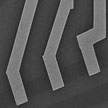 The low-frequency 1/f noise is a ubiquitous phenomenon found everywhere from fluctuations of human heart rates to fluctuations of electrical currents in semiconductor devices. An acceptable level of flicker 1/f noise is one of the key metrics that each new material has to pass before it can be used for practical devices. Graphene has shown a great potential for applications in high-frequency communications, analog circuits and sensors. The envisioned applications require a low level of 1/f noise, which contributes to the phase-noise of communication systems and limits the sensor sensitivity. Now, researchers have discovered a unique feature of 1/f noise in graphene, which can help understand its microscopic origin and develop new techniques for noise reduction.
The low-frequency 1/f noise is a ubiquitous phenomenon found everywhere from fluctuations of human heart rates to fluctuations of electrical currents in semiconductor devices. An acceptable level of flicker 1/f noise is one of the key metrics that each new material has to pass before it can be used for practical devices. Graphene has shown a great potential for applications in high-frequency communications, analog circuits and sensors. The envisioned applications require a low level of 1/f noise, which contributes to the phase-noise of communication systems and limits the sensor sensitivity. Now, researchers have discovered a unique feature of 1/f noise in graphene, which can help understand its microscopic origin and develop new techniques for noise reduction.
May 10th, 2013
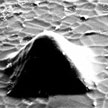 Most of the research efforts on developing synthesis methods for graphene has focused on flat substrates. However, direct growth of graphene layers on prepatterned substrates has remained elusive. In new work, resarchers have grown graphene in prepatterned copper-coated substrates, and they apply this protocol for the fabrication of MEMS devices, in particular, atomic force microscope probes. This layer of graphene improves the functionality of the probes by making them conductive and more resistant to wear.
Most of the research efforts on developing synthesis methods for graphene has focused on flat substrates. However, direct growth of graphene layers on prepatterned substrates has remained elusive. In new work, resarchers have grown graphene in prepatterned copper-coated substrates, and they apply this protocol for the fabrication of MEMS devices, in particular, atomic force microscope probes. This layer of graphene improves the functionality of the probes by making them conductive and more resistant to wear.
May 6th, 2013
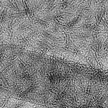 Integration of graphene and its functional derivatives into three-dimensional macroscopic structures is an essential step to exploit the advanced properties of graphene sheets for practical applications, such as chemical filters and electrodes for energy storage devices. In new work, researchers in Singapore report a facile, scalable, and solution-processable strategy to synchronously reduce and assemble graphene oxide sheets on metal surface into large scale chemically converted graphene films under ambient conditions. Compared with other techniques currently used to prepare large-scale graphene film, this novel processing is low-temperature with scalable and high-throughput capability.
Integration of graphene and its functional derivatives into three-dimensional macroscopic structures is an essential step to exploit the advanced properties of graphene sheets for practical applications, such as chemical filters and electrodes for energy storage devices. In new work, researchers in Singapore report a facile, scalable, and solution-processable strategy to synchronously reduce and assemble graphene oxide sheets on metal surface into large scale chemically converted graphene films under ambient conditions. Compared with other techniques currently used to prepare large-scale graphene film, this novel processing is low-temperature with scalable and high-throughput capability.
Apr 30th, 2013
 The fascination with two-dimensional (2D) materials that has started with graphene has spurred researchers to look for other 2D structures like for instance metal carbides and nitrides. A new, very comprehensive review article takes a look at our current knowledge of 2D materials beyond graphene. The paper outlines the different chemical classes of 2D materials and discuss the various strategies to prepare single-layer, few-layer, and multilayer assembly materials in solution, on substrates, and on the wafer scale.
The fascination with two-dimensional (2D) materials that has started with graphene has spurred researchers to look for other 2D structures like for instance metal carbides and nitrides. A new, very comprehensive review article takes a look at our current knowledge of 2D materials beyond graphene. The paper outlines the different chemical classes of 2D materials and discuss the various strategies to prepare single-layer, few-layer, and multilayer assembly materials in solution, on substrates, and on the wafer scale.
Apr 15th, 2013
 Researchers have exploited the extraordinary electrical and mechanical properties of graphene to create a very efficient electrical/sound transducer. This experimental graphene loudspeaker, without any optimized acoustic design, is simple to make and already performs comparably to or better than similar sized commercial counterparts, and with much lower power consumption. Most speakers available today reproduce sound via a mechanical diaphragm, which is displaced oscillatorily during operation. A wide-band audio speaker typically requires significant damping to broaden the response. Even without optimization, the graphene speaker is able to produce frequency response across the whole audible region, comparable or superior to performance of conventional-design commercial counterparts.
Researchers have exploited the extraordinary electrical and mechanical properties of graphene to create a very efficient electrical/sound transducer. This experimental graphene loudspeaker, without any optimized acoustic design, is simple to make and already performs comparably to or better than similar sized commercial counterparts, and with much lower power consumption. Most speakers available today reproduce sound via a mechanical diaphragm, which is displaced oscillatorily during operation. A wide-band audio speaker typically requires significant damping to broaden the response. Even without optimization, the graphene speaker is able to produce frequency response across the whole audible region, comparable or superior to performance of conventional-design commercial counterparts.
Mar 21st, 2013
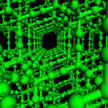 Carbon is the fourth-most-abundant element in the universe and, depending on the arrangements of carbon atoms, takes on a wide variety of forms, called allotropes. Carbon allotropes exhibit unique properties of strength and electrical conductivity. Solid carbon at room temperature has two classical structures: diamond and graphite. In 1985 the discovery of the existence of a third and new carbon allotrope containing sixty perfectly symmetrically arranged carbon atoms (C60) meant a major breakthrough and opened a novel field of carbon nanochemistry. Then, in 1991, carbon nanotubes were discovered and graphene in 2004. Now, a research group in China has designed a novel carbon allotrope they've named D-carbon.
Carbon is the fourth-most-abundant element in the universe and, depending on the arrangements of carbon atoms, takes on a wide variety of forms, called allotropes. Carbon allotropes exhibit unique properties of strength and electrical conductivity. Solid carbon at room temperature has two classical structures: diamond and graphite. In 1985 the discovery of the existence of a third and new carbon allotrope containing sixty perfectly symmetrically arranged carbon atoms (C60) meant a major breakthrough and opened a novel field of carbon nanochemistry. Then, in 1991, carbon nanotubes were discovered and graphene in 2004. Now, a research group in China has designed a novel carbon allotrope they've named D-carbon.
Mar 15th, 2013
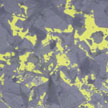 Unlike silicon, graphene lacks an electronic band gap and therefore has no switching capability; which is essential for electronics applications. Opening an energy gap in graphene's electron energy spectrum is therefore a critical prerequisite for instance for creating graphene transistors. One method of obtaining a bandgap is to use reduced graphene oxide, an inexpensive material with an industrial-scalable production route. Researchers have now managed to grow and extend graphene oxide out of graphene oxide flake templates.
Unlike silicon, graphene lacks an electronic band gap and therefore has no switching capability; which is essential for electronics applications. Opening an energy gap in graphene's electron energy spectrum is therefore a critical prerequisite for instance for creating graphene transistors. One method of obtaining a bandgap is to use reduced graphene oxide, an inexpensive material with an industrial-scalable production route. Researchers have now managed to grow and extend graphene oxide out of graphene oxide flake templates.
Mar 8th, 2013
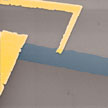 The low-frequency fluctuations in electrical current attract particular attention among researchers. The low-frequency electronic 1/f noise was first discovered in vacuum tubes, in 1925, and later observed in a wide variety of electronic materials and devices. The importance of this noise for electronic and communication devices motivated numerous studies of its physical mechanisms and methods for its control. Researchers were now able to shed light on 1/f noise origin and mechanisms using a set of multi-layered graphene samples with the thickness continuously varied from around 15 atomic planes to a single layer of graphene.
The low-frequency fluctuations in electrical current attract particular attention among researchers. The low-frequency electronic 1/f noise was first discovered in vacuum tubes, in 1925, and later observed in a wide variety of electronic materials and devices. The importance of this noise for electronic and communication devices motivated numerous studies of its physical mechanisms and methods for its control. Researchers were now able to shed light on 1/f noise origin and mechanisms using a set of multi-layered graphene samples with the thickness continuously varied from around 15 atomic planes to a single layer of graphene.
Feb 27th, 2013
 The low-frequency 1/f noise is a ubiquitous phenomenon found everywhere from fluctuations of human heart rates to fluctuations of electrical currents in semiconductor devices. An acceptable level of flicker 1/f noise is one of the key metrics that each new material has to pass before it can be used for practical devices. Graphene has shown a great potential for applications in high-frequency communications, analog circuits and sensors. The envisioned applications require a low level of 1/f noise, which contributes to the phase-noise of communication systems and limits the sensor sensitivity. Now, researchers have discovered a unique feature of 1/f noise in graphene, which can help understand its microscopic origin and develop new techniques for noise reduction.
The low-frequency 1/f noise is a ubiquitous phenomenon found everywhere from fluctuations of human heart rates to fluctuations of electrical currents in semiconductor devices. An acceptable level of flicker 1/f noise is one of the key metrics that each new material has to pass before it can be used for practical devices. Graphene has shown a great potential for applications in high-frequency communications, analog circuits and sensors. The envisioned applications require a low level of 1/f noise, which contributes to the phase-noise of communication systems and limits the sensor sensitivity. Now, researchers have discovered a unique feature of 1/f noise in graphene, which can help understand its microscopic origin and develop new techniques for noise reduction.
 Subscribe to our Nanotechnology Spotlight feed
Subscribe to our Nanotechnology Spotlight feed





